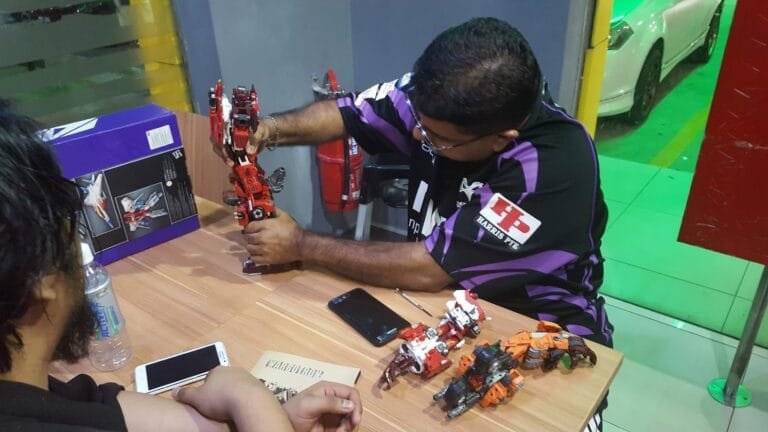The film crew of Transformers: Revenge of the Fallen, who have turned this unearthly landscape into a partially destroyed Egyptian village, are covered head to toe in floppy hats, long-sleeved shirts and boots to protect themselves. But not director Michael Bay. He leaps around the set like a little kid, in a short-sleeved Polo shirt.
“Fire in the hole!” An explosion goes off next to a crumbling house. Bay grins approvingly and darts to some fake rocks where stars Shia LaBeouf and Megan Fox are cowering in the face of yet another attack by robots from outer space. Over the course of the day Bay will film 63 shots, three times as many as on most sets. “I hear stories about directors waiting eight hours to shoot,” says Bay. “How can your game plan be so screwed up? If I ran a studio, I’d fire your ass.”
As well known for his blowups on the set as he is for explosions on the screen, Bay has made his share of enemies. One actor who worked as an extra on Pearl Harbor recalls how Bay accused another actor of thinking the attack on Pearl Harbor was funny when someone laughed after hours of sitting for a take. An executive says Bay got so enraged at an extra on the set of Transformers that he made him stand in a corner. Actress Kate Beckinsale told reporters Bay made her feel ugly on the set of Pearl Harbor. (Not true, says Bay. He asked her to work out more.) Bay is known for sometimes clashing with stars on the set, such as Bruce Willis in the 1998 film Armageddon. “He has a tendency to try to be a director and change actors’ lines,” says Bay. “I don’t think Bruce liked that I had a pair of balls.” He takes a similarly defensive stand toward the critics who have called his films “vile,” “brain dead” and “pandering.”
But audiences love him. Bay’s seven movies have pulled in $2.6 billion at the box office, putting him in the same league with James Cameron ($3 billion, including Titanic, the highest-grossing film ever, at $1.8 billion). That means something at a time when the movie business is going through its own action thriller, as studios run low on capital and people stop buying DVDs. (Although theaters keep half of ticket sales, the gross amount is a good proxy for the movie owner’s total revenue, which includes DVDs and other money streams.)
Bay brings his movies in on time and on budget, a rarity in Hollywood. Because his pay is largely based on the film’s profits (usually one-third of the take after the studio recoups its production and advertising costs), he’s got plenty of incentive to rein in expenses. “Michael makes me look good because he counts every penny,” says Jerry Bruckheimer, who has produced five of Bay’s films.
The new Transformers movie (the second full-length feature in the series) cost $195 million to make. But Bay estimates it would have cost $10 million more if he hadn’t partnered with General Motors ( GMGMQ – news – people ) and the U.S. military to get free cars, helicopters and battleships. By keeping the budget (relatively) low on the first Transformers flick, in 2007, he was able to increase his share of the movie’s $708 million worldwide gross, earning $80 million from the film. So what if those product placements make his movies look like long commercials? “People say it’s whoring out, but it’s not,” says Bay, 44. “Advertising is in our lives. It’s unavoidable. To think you can’t have it in a movie isn’t real life.”
One of his first jobs out of school (he majored in film and English at Wesleyan University) was directing commercials. By the time he was 26 Bay had created ads for Coke, Levi’s and Budweiser and a memorable Chevy ad showing a new line of cars being released into the wild. He learned everything on the job–rigging lights, focusing a lens, ordering around big egos like the professional athletes he shot in his Nike ( NKE – news – people ) ads.






